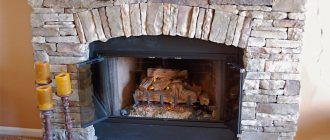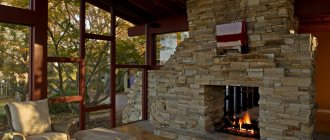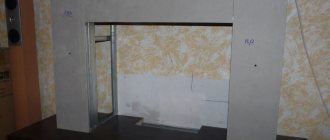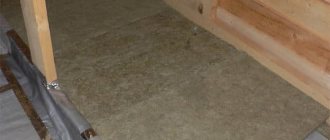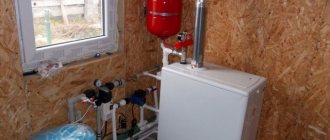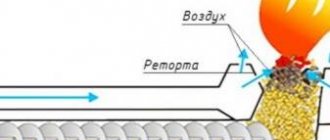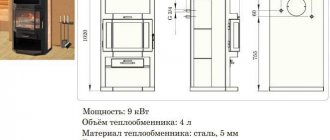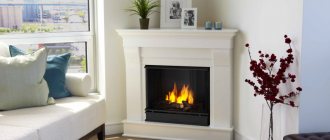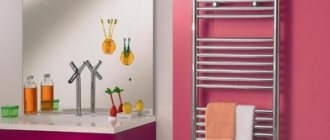Primitive man was tired of keeping the fire burning all night long. By covering the hole with stone, a Stone Age inhabitant created the world's first hearth. In the 21st century, a fireplace has become an indicator of the prestige, thoroughness, and seriousness of the owner of the house. A fashionable item in the interior is not installed to heat the estate. Decorating the fireplace with natural stone adds a romantic charm to the family nest. Let's figure out what lies behind the beauty of minerals. Why is it important to choose the “right” fireplace? Let's look at the advantages and disadvantages of each model.
Features of natural stone
Mineral aggregates are traditionally used as natural stones for finishing fireplaces. The most common natural facing materials are marble, sandstone, and granite. The main advantages of natural stone:
- environmental Safety;
- strength;
- durability;
- high quality;
- variety of textures;
- easy care of a smooth surface.
The surface of natural stone may contain cavities, veins and inclusions. These points are not defects, but features of a natural mineral. Advanced techniques used for stoves and fireplaces make it possible to create portals of any complexity.
Uneven grinding
Carving, polishing, grinding require time and skill. The heterogeneity of the stone is the main reason for the appearance of roughness in some areas. Even the color shade can change on one slab. Designers working on cladding can spend months selecting the right pattern. For example, marble takes polish well, and when polished, it reveals its structure more intensely.
Caverns
Under the influence of natural processes, voids are formed in rock aggregates. irregular or oval in shape. Cavities vary in size (from 1 mm to 100 mm) and shape (irregular, oval, etc.).
Microcracks
Products made from wild stone, despite the high quality of processing, may have small cavities, veins, etc. on the surface. Geologists call microcracks not a defect, but a sign of wisdom and kindness. Microscopic depressions indicate the metamorphic origin of the mineral. The stone is calm and energy flows are balanced. The crack will never grow, because... Before cutting into slabs, the minerals are treated with special resins in a vacuum chamber.
Calcite veins
Fluid inclusions are formed in wild stone as a result of the replacement of one mineral by another. At the same time, the external forms of the source material are preserved. Calcite is included in marble and is the main component of limestone. Pseudomorphosis fills voids and forms veins that look like cracks without depressions. Most often, the mineral aggregate is found in brown and beige marble.
Fossilized shells
Cephalopods inhabited our planet many millions of years ago and became extinct along with dinosaurs. Over time, the fossils were exposed to mineral solutions and settled in rocks. Fragments of ammonite, brachiopod and other species can be found in fireplace mantels. In cross-section, spiral-shaped fossilized shells create picturesque patterns reminiscent of a starry galaxy. Natural inclusions in stones are perceived in many cultures as a symbol of longevity, family wealth, and prosperity.
Porcelain tiles
Ceramic tiles have properties similar to refractory bricks. The similarity in structure allows the tiles to change sizes when heated, along with the material of the fireplace insert itself. At the same time, the glaze coating protects the tiles from the adverse effects of water and soot.
7 photos
Ceramic tiles can have different shapes and sizes. In stores there are products that are designed specifically for finishing work with protrusions, corners and shelves. The color scheme of terracotta tiles is similar to natural materials. It is easy to lay, so you do not need special tools when working with it. An ordinary grinder is suitable for adjusting and cutting elements.
How is tiling done?
The process of finishing with ceramic tiles consists of several steps:
- Initially, you should clean the top layer of the fireplace insert from whitewash, plaster or paint. Then the seams are expanded between the bricks by one centimeter, and the dust is removed with a brush;
- using fire-resistant mastic or clay solution, you need to seal and dry the uneven edges;
- if your portal has poor brickwork and the mortar layer is more than 5 millimeters thick, it is necessary to level the surface of the structure using a grinding machine;
- then you should light the fireplace. The bricks should heat up to 30 degrees;
- A primer is applied to the surface of the bricks. This solution reduces dusting, promotes good adhesion and even drying of the adhesive liquid. Typically, the primer takes a couple of hours to dry;
- finishing work with tiles should begin from the bottom. If necessary, protruding parts can be trimmed and sanded. If your project contains corner elements, they should be glued first;
- The glue is diluted according to the instructions on the box. Use a drill fitted with a hard wire attachment as this will effectively mix the solution;
- use a wooden spatula to apply the solution. After this, use a notched trowel to run over the surface and press the tile tightly. Glue several tiles at a time to keep the level and plumb under control. A plastic corner helps create equal distances between elements;
- It takes two days to dry the materials, after which the joints are grouted. As a grouting material, you can use special products or a clay solution with fine sand and dye;
- If your tile does not have an auxiliary protective layer, you can apply a fire-resistant varnish to its surface. It makes it easier to care for the facing material.
Advantages of finishing fireplaces with stone
A stove in a home is an integral part of the material culture of mankind. Kaminos (translated from Latin as “hearth”) as a complex functional object has been known since the ancient period (1st century BC). Cladding the fireplace with natural stone creates a cozy atmosphere in the house, adds luxury and sophistication to the interior space. The design, thought out over centuries, is, in addition to beauty, characterized by undeniable advantages:
- Natural stone can withstand any temperature changes, high humidity, and thermal stress.
- Environmental safety of natural cladding.
- Strong, durable material resists mechanical stress and cannot be deformed.
- Heat storage stoves not only decorate, but also heat the house.
- The ability to choose from a variety of styles and finishing options to suit your favorite building.
- The ability of minerals to take any shape during processing, taking into account the texture of the product.
The best stone fireplace portals are equated to works of art and are exhibited in museums around the world.
Heat capacity
Natural stones radiate heat longer than other materials. Heat storage stoves create comfort in the home and do not require constant supply of raw wood. A warm stone spreads energy through the flow of air flowing over the heated surface. The soft warmth of heat-resistant natural stone (granite, marble, basalt) does not spread dust or cause a feeling of draft.
Variety of shapes
The first fireplaces, which became monuments of world architectural art, appeared in the Middle Ages. In France, the hearth of the Mont Saint-Michel Abbey is kept. Pilgrim knights gathered around a huge structure made of cut stone. In the firebox was the carcass of a bull, which was roasted whole for the evening meal. From the mid-13th century, monastic asceticism was replaced by the desire to live in beauty. Thanks to the architects, the fireplace room became no less important than the royal living room. During the Renaissance, granite and marble fireplaces were decorated with Florentine mosaics, columns and pilasters. In the 15th century, to protect the structure from intense heating, the wall was decorated with cast iron slabs. In the 19th century they used elegant grates. At the beginning of the 20th century. A tiled fireplace panel by M.A. was exhibited in Paris. Vrubel, sparkling with all colors. The cladding, made in the majolica style (fired clay with painted glaze), gave the ceramics the appearance of a precious stone. A new name has appeared - “Russian Fireplace”. The emergence of many options for finishing a fireplace allows craftsmen to produce a functional piece of furniture of any design and color scheme.
Durability
650 million years ago, the Solar System, traveling around the center of the Galaxy, crossed the iron-dust nebula of the Milky Way. A huge amount of cosmic dust fell on Earth. During the Precambrian period, siliceous sediments accumulated in reservoirs. Under the influence of the internal forces of the planet, the fossils were compressed and turned into minerals. Humanity has received a durable building material. With proper installation and the necessary care, a fireplace lined with stone will last a hundred years.
Completeness of design
Natural stone with expressive veins, unusual inclusions, and rich color always looks impressive. Facing materials preserve the natural structure and beauty of the mineral. Sand rocks in massive fireplaces convey the mood of the ancient East. Marble and granite emphasize the well-being of the owner of the house. Modern technologies make it possible to cut out shapes of any complexity and create any color shade. All elements will complete the design, corresponding to the stylistic design of the home.
Increasing home value
Using natural stone to surround a fireplace will help sell your home profitably if necessary. The beauty of a massive structure, the price of material and work will significantly affect the final cost of the home. Elegant marble and monumental granite will only emphasize the luxury of your home.
Plywood fireplace
To create a false structure in an apartment, you can use a strong and inexpensive material - plywood. You can buy it at a furniture store or at a construction market. Thanks to the wide variety of colors of laminated film, it is always possible to choose the material to match the interior decoration of a particular room.
The only drawback of plywood is its easily vulnerable appearance
Sawing the material into pieces of the required size is done with a jigsaw, or you can use the services of a furniture workshop. The edge of the slab must be processed, for which a special tape and iron are used.
Having prepared all the necessary structural parts, bolts and fasteners, you can begin assembling the fireplace from plywood.
According to the prepared sketch, construct the frame of the future false oven. For this, it is better to use a metal profile or timber. The structure can be given rigidity and solidity by attaching it to a wall or floor. After this, the sides are sewn up with plywood sheets
To do this, you can use various materials: photo wallpaper, tiles, PVC panels, decorative stone, etc. To give the product a rustic style, the fireplace should be decorated with wooden elements with carved patterns, coated with varnish or stain. At the final stage, the firebox is performed. There are many ways to create artificial fire, but you don’t have to use it by placing logs or colored candles in a niche. The final result is determined by the master’s imagination and creative approach to business.
Advantages of natural stones
Scientists consider beauty and energy to be the main advantages of natural minerals, which cannot be reproduced artificially. Strength and resistance to environmental influences are important characteristics of durable minerals. Cladding stone for a fireplace has a number of advantages compared to artificial materials:
- does not harm human health;
- does not contain polyester resins or other harmful substances;
- a natural mineral is inert, i.e. does not react with other minerals;
- a heat-resistant slab can withstand temperatures of hundreds of degrees (for example, marble begins to collapse at temperatures above 910°C);
- the design and rich color scheme cannot be repeated;
- fireplaces made of natural stones do not age and remain always fashionable interior items.
Natural minerals are a high-quality material, elitism, and a historical image.
Questions and answers
Which stones will last the longest?
Granite and marble have the highest durability.
What artificial stones are best to choose for cladding?
You should focus on your budget and the desired type of fireplace. The only rule is that when decorating a fireplace, it is better to avoid stones with a polymer filler.
Which stone will be the most durable?
Granite has the greatest strength.
What material is the safest to line a fireplace with?
Natural rock stones are safe for humans and do not release harmful compounds into the environment when heated.
Is it necessary to use heat-resistant stones for facing a fireplace?
Yes, fireplace stones must be heat-resistant. The only exception is plasma fireplaces.
Disadvantages of natural stones
An objective disadvantage is considered to be a lot of weight. In recent decades, the myth about the radioactive properties of rocks has spread. Scientists have conducted a number of studies and found that natural stones do not pose any danger to human health. Strict radiation requirements protect the consumer. All mined stone is tested, and safety is confirmed by a certificate. Disadvantages include high cost, difficulty in installing stone cladding, and labor-intensive work.
What you should pay attention to when choosing a stone
Today, fireplaces are designed for utilitarian use rather than art. Physical and mechanical properties, pattern and texture of the rock, features of the purpose of the premises - all this influences the choice of natural stone. What you should pay attention to:
- Plan a budget (includes the cost of materials and the work of professionals).
- Review the durability and maintenance requirements of natural mineral.
- Select a style or “cut” of the stone.
- When purchasing facing stone for stoves and fireplaces, consider the heat-resistant characteristics.
- View the quality certificate guaranteeing compliance with the parameters.
- On the packaging, check the brand logo and manufacturer's coordinates.
- If you are looking for the most durable mineral, choose granite.
- Check the quality of the material, which should not contain defects, deep cracks, chips, or other signs of defects.
- Natural rock stones must have a uniform surface.
Check cuts that may have been damaged during processing of the mineral.
What type should the fireplace have?
The variety of fireplaces is classified according to design and style. Particular attention is paid to fireplace portals. They come in two types and are named after their external association with the letters “P” and “D”.
- The most common type is U-shaped, which is found among fireplaces of all styles.
- D-shaped portals are characteristic of “Country”, “Modern”, and sometimes “Classical” styles.
Like architectural structures or works of fine art, fireplaces are classified by style. A separate group includes natural stones that are not used for artistic cladding. For example, basalt slabs are great for insulation and heat retention.
The style variety of fireplaces is presented in the table.
| Style | Peculiarities |
| Romantic | For cladding the fireplace, untreated stones or exposed bricks are used. |
| Classical | Suitable for those who want to make a living room similar to Queen Victoria's study Royal style means fireplaces with harmonious proportions, straight lines, simple decor |
| Country | Opens up wide possibilities for finishing the portal in a folk style |
| Rococo | Aristocracy style Low fireplaces are covered with marble tiles. Massive clocks and candelabra are placed on the mantelpieces. Paintings in luxurious frames are hung nearby. |
| Empire style | Since the second half of the 18th century, the fireplaces bear the stamp of theatricality, borrowed from ancient Roman examples. Columns, pilasters, griffins, sphinxes, and lion paws appear |
| Modern | Style design of the early 20th century Lush decor is replaced by the color of stone Elongated design similar to a pencil case |
| Russian style | The ancient custom of decorating fireplaces with ceramic tiles is used. Tiles of semicircular, angular, relief shapes with paintings are mounted on special heat-resistant boxes |
| Modern, urban | There are no expensive installations in the decoration. The fireplace is perceived as a source of beauty of living fire in a natural frame. |
Designer fantasies embody any type of natural stone. But marble fireplace portals have become a symbol of sophistication and luxury. In addition to the beauty and variety of colors, marble concentrates great bioenergy and draws out many diseases.
DIY work
Building a fireplace is a difficult task. Some jobs can be done on your own, while others will require the help of professionals. The main difficulties are caused by arched ceilings. The person himself decides what material will be used for cladding. All elements and mixtures must be of high quality. The simplest option is to use ordinary red brick. Planned budget Installation of a complex functional object requires serious preparation. The first step is to create a construction budget. Calculations depend on the type of fireplace. For example, the standard one will require lower costs. Corner, island or double-sided increases the budget several times. The plan includes:
- cost of cladding material;
- firebox type:
- carrying out installation work;
- building materials (clay, sand, masonry mortar, etc.);
- stove maker's tool kit.
Draw up a scenario in numbers, taking into account as many factors and details as possible.
Durability
Stoves and hearths have always played a leading role in the home. A fireplace is not a dress or a suit. Clothes are chosen based on anything. When purchasing a stone, the requirements for durability and maintenance nuances are taken into account. Basalt slabs will never crack, marble or granite will last for decades, low-quality brick will crumble at any minute.
Cut
The processing of a stone, which gives the desired shape (symmetrical, multifaceted, oval, etc.), is called cutting. When choosing the type of polishing, take into account the style of the fireplace, the features of the mineral that need to be shown from the best side. In their natural state, natural stones look unattractive. After cutting (modern, classic or rustic), the heat-resistant material acquires decorativeness and elegance.
Connection technique
Recessed (dry), standard, wide seam are the main types of fireplace stone joints. Homogeneous joints are obtained with the correct use of building materials. The quality of clay is determined in a simple way. Flagella rollers are made from plastic material (diameter 2 cm, length 25 cm). If the clay is not flexible enough, sand is soaked from it. Clay of medium plasticity is suitable for fireplace masonry. Cement mortars are prepared in quantities that can be used within 45 minutes. Colorful fillers enhance the overall look of the portal design.
Do-it-yourself portal finishing
Even the simplest finishing of a fireplace portal or firebox, which at first glance is not difficult, must be done in a certain step-by-step sequence.
First of all, you will need to clean the surface from dirt, dust, previous cladding, excess mortar, degrease it and, if necessary, level it.
The stone is pre-sorted by size, shape and color. The initial layout is done on the floor and only after that is transferred to the fireplace and secured with heat-resistant glue or mastic.
It is best to saw through stone or other cladding with a hacksaw or a saw blade. This way you will not damage the material or spoil its appearance.
The mastic or glue must be suitable for fireplaces and stoves and have a fire-resistant characteristic. All excess solution must be removed in a timely manner, without waiting for it to dry. However, you should not do this right away; the solution should partially dry. This way you can easily remove it without damaging the cladding.
At the last stage, the surface is treated with a special varnish or impregnation, which will protect the material from contamination, deformation and will not allow it to absorb moisture. Such coating will significantly extend the life of the cladding and maintain its visual appeal.
This video discusses in detail the cladding of a fireplace with your own hands, its firebox and portal with decorative gypsum stone or tiles:
The best options for cladding
Fireplaces made of natural stone look organic. The chosen style is reminiscent of the era in which examples of high artistic value were created. Ural gems are recognized as the best finishing materials in the world. Fireplaces lined with malachite and rhodonite are considered unique products, separated into a separate group. The decoration of fireplaces made from natural minerals is distinguished by a variety of color shades, combining picturesque designs, dark and light spots, and sinuous lines. The dense rock is well polished and is not subject to mechanical stress. The white, cream, golden sand color of the cladding as a decorative element lasts for years.
Granite
Natural stone is the best finishing material. To finish a fireplace with granite, slabs with a thickness of 20-30 mm are used. Strength, high resistance to temperature changes, the beauty of the stone, and a variety of colors are the main advantages of the coarse-grained mineral. Designers recommend using porcelain stoneware, an artificial resemblance to natural stone, to decorate the fireplace.
Limestone
A less expensive version of natural stone is used for electric fireplaces. Limestone is a porous sedimentary rock composed of calcite crystals of varying sizes. Depending on the processing method, the design is made in country style or elegant urban style.
Marble
The main advantage of marble portals in comparison with other natural stones is their rich range of colors. In modern interiors, the mineral is used in different styles: from classic to high-tech and modern. The appearance of marble splendor is complemented by bronze casting and decorative elements. Wall mirrors look good, and figurines and candlesticks on the mantelpiece.
We recommend reading about marble in detail: Marble: properties, colors, use in interiors
Quartzite
A long-lasting, durable mineral begins to deteriorate after 150–300 years. Spectacular and expressive varieties of quartzite are used as an ornamental stone for facing fireplaces. Due to its high decorative qualities and color palette, quartzite is classified as a semi-precious mineral of the first order (along with malachite, jasper, lapis lazuli, and agate).
Slate
Golden, purple, brown varieties of slate have a layered structure with parallel accretion. Individual plates of varying thickness or solid blocks are a convenient building material for cladding. Fireplaces always look stylish in the interior and create the atmosphere of a country house. In terms of quality characteristics, slate is comparable to granite.
Multicolor slate fireplace
Travertine
The fine-grained, porous mineral is formed by the precipitation of calcium carbonate in carbonated water. In underground caves it is found in the form of stalactites and stalagmites. Tiled travertine always has a porous surface and is used as a lining for fireplaces. A banded light yellow mineral is a versatile stone. The treatment can give your fireplace both an antique and a modern look.
Soapstone chlorite
Opaque natural stone with a matte silky sheen maximizes thermal energy absorption, withstanding temperatures up to 1600 °C. The mineral is easily processed and is not affected even by strong acids. These qualities make soapstone an excellent material for cladding fireplaces. Depending on the impurities, the color changes from white to dark cherry. Sometimes a very smooth colored stone is passed off as jade.
Sandstone
A versatile mineral with a wide variety of shades, it can be easily processed. For a fireplace, you can choose sandstone of any thickness and configuration. Ornamental stone is an ideal option for interior decoration. Layered tiles for cladding are attractive due to their texture, shades of color, beauty and durability.
Video “10 ideas for beautiful fireplaces trimmed with natural stone”
Tiles finishing
Fireplace tiles
A fireplace with such cladding has a very original, beautiful and unusual appearance. For finishing, you can use glossy and matte tiles, with a relief surface or some kind of pattern.
Fireplace covered with tiles
Mantel
The main difference between a tile and an ordinary tile is the presence of a special box-shaped protrusion, known as a rumpa.
Rumpa
This element allows you to attach tiles to the surface of the structure. In addition, the pumps accumulate heat during the combustion process of the fireplace, which contributes to some improvement in the heat transfer of the unit.
It is necessary to start laying stove tiles from the corner parts
First step
Prepare finishing material. Carefully inspect the tiles. Even samples from the same batch may have slightly different shades. Arrange the tiles so that the finished finish looks as uniform and harmonious as possible.
Fireplace decoration with tiles
Third step
Proceed to attaching the tiles. The elements are fixed using wire.
Tiles knitting pattern
Fill the tile tumbler with a mixture of brick fragments and clay to 50% of the volume. Insert a piece of metal wire into the tiller. Traditionally, a rod with a diameter of 0.5 cm is used. In this case, the segment must be placed with some bend upward.
Tie a soft wire to the middle of the installed rod. Fill the pump to its full capacity with the previously mentioned mixture.
Scheme for attaching tiles to the fireplace
Lay the tile, press it tightly to the surface and hide the soft wire in the masonry joint.
To connect the tiles to each other, use U-clamps.
Follow the recommendations received, and with your own hands you will create a finish that is in no way inferior in its aesthetic and performance characteristics to the cladding made by professional repairmen.
Alternative fireplace finishes
In addition to traditional minerals, wood, fragile tiles, durable steel, and artificial stones of all varieties are used to decorate fireplaces. The choice of portal depends on the location of the structure and the taste of the owner of the house.
Concrete
Cladding with natural material looks very stylish, but is very expensive. Framing the fireplace with special concrete is the best budget option. Artificial building stone gives the interior a modern look and retains heat well. Various pigments, marble or granite chips can be added to the elastic material.
Stone veneer
The flexible building material is made from shale minerals. The thinnest layer of natural stone is fixed with a special resin onto a fiberglass base. The boards, resistant to temperature and moisture, are durable and extremely easy to maintain. Each sheet of stone veneer has a unique pattern and unique texture.
Brick
The interior of the fireplace is lined with refractory bricks that can withstand temperatures of 900° C. To cover the portal of a brick fireplace, different types of durable building materials are used (clinker, facade, hand-made “aged”). A large selection of shapes, a wide range of colors, and the ability to choose the desired texture allow you to make a brick fireplace beautiful and durable.
Tile
Torn stone, ceramic, decorative, “brick-like”, majolica - any tile from a thousand types will become a decoration for the hearth. Large-format and strict porcelain stoneware is considered the best material for cladding large fireplaces. Monolithic structure, wide choice of decor (marble, granite, etc.) will satisfy the taste of even a professional designer.
Tree
For exotic lovers, portals made from various types of wood are suitable. The main condition for safety is a properly laid out fireplace. The cladding can be combined with other finishing materials. The most popular types of wood: oak, cedar, cherry, walnut. Wooden elements are used when decorating a portal in a natural rustic or country style. For classic fireplaces, valuable tropical species such as mahogany are chosen.
Steel
A popular fireplace surround material gives the interior a modern, industrial look. The steel structure is characterized by high heat transfer, small dimensions, and ease of maintenance. Sheet metal for finishing portals is made in classic square, oval, trapezoidal shapes.
Fake diamond
The facing material is not inferior in beauty to natural mineral. Fireplaces made of artificial stone look luxurious and naturalistic. The structure of the outer covering imitates the natural texture and rich color palette of natural stone. For example, the decoration made from artificial eagle cannot be distinguished from natural rhodonite. The portal shines like a gem, combining shades of cherry pink with dark spots and sinuous lines. According to legend, small stones were found in nests with chicks of eagles.
It is believed that in a house where a fireplace is installed, healthy and proud children will grow up.
Artificial materials
Artificial stone is used quite often for facing fireplaces. The advantages of such a coating include the most accurate visual imitation of natural stones, not only preserving the color, but also the structure. At the same time, the products are lightweight and versatile. They withstand high temperatures well and can be used for finishing any surface.
The fireplace portal, lined with artificial stone, does not have a significant impact on the floors of the house. At the same time, artificial analogues are easy to process with your own hands and without the use of professional tools.
Today, in the assortment of stores, you can find artificial stone with a certain texture, imitation, and color. The product is easy to cut and takes on the desired shape.
But artificial minerals can also have their drawbacks. Before purchasing, you need to make sure that you are buying products from a trusted manufacturer, for which the seller has all the necessary quality certificates.
Many products are of insufficient quality and are not intended for cladding heating units. When heated, they begin to release harmful and health-hazardous decomposition products into the space.
High-quality material should not have various chips, deformations and other damage on its surface, which could lead to a violation of the tightness and safety when lighting heating equipment.
Artificial analogues also partially contain environmentally friendly components. These include stone chips, which make the product strong, durable, heat-resistant and safe to use.
Stone development can be carried out using one of the two technologies presented below:
- Acrylic stones are based on marble chips, which can be about 70-85 percent of the total composition. In order to give the final material the necessary strength, acrylic resin is added to its composition, from which the name of the stone originated. The composition may also contain various additives and dyes that give the product a certain color or pattern. This, in turn, allows you to imitate almost any stone, even precious. The advantages of this variety include durability and ease of maintenance. To remove dirt, you do not need to use chemicals, just a sponge or cloth soaked in water is enough;
- The most convenient and simplest is the installation of modern flexible stone. Due to innovations and developments, this material is produced in sheets whose dimensions are 96x48 centimeters, with a sheet thickness of 1-5 millimeters. The sheet is based on marble chips, due to which the surface of the product is slightly rough. Externally, this material resembles linoleum. The advantages include low weight, no seams that need to be rubbed, good tolerance to high temperatures, environmental friendliness and the absence of harmful emissions. Using this material, you can decorate a fireplace and any interior item with your own hands and in the shortest possible period of time. Even simple stationery scissors are suitable for cutting.
Gypsum stone is the simplest and most cost-effective option for cladding a fireplace portal. You can either buy it or make it yourself from a special solution and pre-purchased or made blank molds. The advantages of the material include environmental friendliness, durability and low weight.
